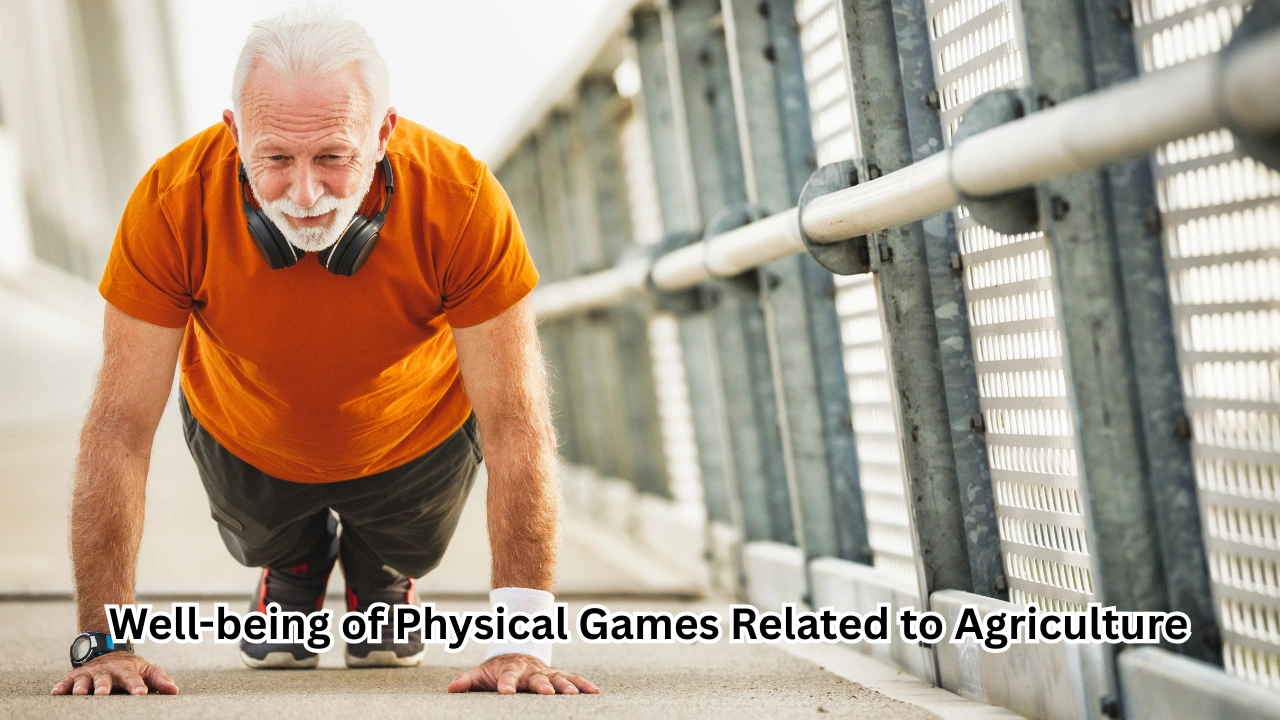Physical Games Related to Agriculture: Boost Fitness and Farm Knowledge

In today’s modern classrooms and community spaces, learning is no longer limited to books and lectures. Physical games related to agriculture bring energy, fun, and valuable education together. These games allow kids, students, and even adults to understand farming in a very hands-on way.
They also encourage teamwork, coordination, and physical activity while teaching key ideas about crops, animals, and farming life. Whether it’s a school event, farm camp, or community festival, these games offer real-life skills through movement and play.
Read more about games and marketplace of ubisoft and rainbow six siege at r6 ‘marketplace
What is Physical Games Related to Agriculture?
Physical games related to agriculture are fun activities that teach farming through movement and play. These games often include tasks like planting, harvesting, or herding animals using simple props. They help learners understand farm life while staying active and engaged.
Teachers and organizers use such games in schools, camps, and community events to make agriculture easy to learn. They promote teamwork, fitness, and respect for farming work. Students enjoy learning through action, which helps them remember lessons better.
Why Physical Games Matter in Agriculture Learning
Agriculture may seem like a topic that needs long hours in the field, but it can also be taught creatively. Physical games related to agriculture give learners a chance to act, move, and think while exploring the life of a farmer.
These games are not only fun but also support physical fitness, problem-solving, and memory skills. Students remember better when they learn through action. Also, such games create a deep respect for the hard work farmers do every day.
Educational Goals Behind These Games
Many schools and agricultural learning programs use physical games to meet their educational goals. Educators link the games to farming topics like planting, harvesting, animal care, irrigation, and more.
Here are some of the key learning outcomes from physical agricultural games:
| Learning Goal | Description |
|---|---|
| Farming Awareness | Children learn how food is grown and how farms operate |
| Physical Activity | Kids stay active while gaining farming knowledge |
| Team Building | Most games require players to work in pairs or groups |
| Motor Skill Development | Carrying tools, moving soil, or “milking cows” builds coordination |
| Respect for Agriculture | Young people understand the value of labor behind farming |
Popular Physical Games Related to Agriculture
Let’s look at some common and creative physical games related to agriculture that have proven both educational and exciting.
One of the most engaging activities is the Harvest Relay. In this game, children race across a track carrying toy crops like plastic carrots or corn cobs. The aim is to bring them back to their team’s “storage barn” as quickly as possible. This game teaches about timely harvesting and teamwork, just like on a real farm.
Another fun and educational game is Seed Planting Challenge. Here, players dig small holes in the soil, drop in seeds (or pretend seeds like beads), and cover them properly. Judges then score the rows based on speed and neatness. It mimics the real method of planting crops while enhancing precision and hand-eye coordination.
Also Read: Skip the Games Grand Rapids A Complete Guide
Games That Mimic Real Farm Activities
A crowd favorite at farm festivals is the Cow Milking Contest. This activity uses gloves filled with water to represent cow udders. Players must “milk” them into cups. The one who fills the cup fastest wins. This is a hilarious yet informative way to show how milking is done.
Similarly, Sheep Herding Games involve guiding balloons or soft balls into a pen using foam sticks. This gives players a sense of how shepherds guide animals in the fields, highlighting skills like direction and calm control.
These games not only simulate farm work but also make players think quickly and work as a team.
Classroom and Camp Uses for Agriculture Games
In schools and summer camps, physical games related to agriculture are often used as part of STEM (Science, Technology, Engineering, and Math) or environmental learning programs.
For example, in eco-camps, children might take part in Farm Obstacle Courses. They jump over hay bales, carry buckets of water, or pull toy wagons full of “crops.” This lets them feel what it’s like to work hard on a farm and helps build endurance and responsibility.
Another educational setup involves Sorting Crops Game, where children must quickly pick out toy crops and match them with labeled baskets like “fruits,” “vegetables,” or “grains.” This game improves thinking speed while introducing them to types of produce grown on farms.
Also Read: Arc Xe-LPG 64EU Gaming Integrates Graphics Performance
Why Kids Love Agricultural Games
Children naturally love to run, jump, and compete. Adding farm-related tasks to that mix makes learning enjoyable. Games also provide a break from screen time and textbook learning, allowing students to move around and learn with their senses.
Kids often ask questions during these games, such as “Why do we need to harvest so fast?” or “What crops grow in summer?” This kind of active curiosity leads to deeper understanding of agricultural concepts.
The following table compares indoor lessons vs physical games in terms of engagement and learning:
| Activity Type | Engagement Level | Learning Retention | Physical Activity |
|---|---|---|---|
| Indoor Class Lessons | Medium | Moderate | Low |
| Physical Games | High | High | High |
Health and Well-being of Physical Games Related to Agriculture
Besides learning farming concepts, physical games related to agriculture also help improve health. Children who play these games regularly develop better balance, strength, and stamina. It’s a fun way to keep them fit while also learning something important.
These games also help in reducing stress. Being in natural environments and mimicking real-life tasks like watering plants or feeding animals calms the mind and improves mood. It also builds a stronger bond between children and nature.

Also Read: The Game Archives Gameverse Preserving Video Games Online
Agricultural Games Around the World
Different parts of the world have their own versions of physical games related to agriculture. In the Philippines, schools sometimes organize coconut races where children roll coconuts using their feet. In rural India, bullock cart racing events are held during fairs, though they are mainly for older teens and adults.
In U.S. farm schools, agri-Olympics are becoming common. These include a variety of games such as haystack building, egg races, and crop-matching races. These global examples show how farming traditions can be turned into educational fun through games.
How to Design Your Own Agricultural Game?
You don’t need a big farm to run these games. Even a small garden, backyard, or school playground can be turned into a learning space. All you need is some imagination, basic props, and a little setup time.
For example, to create a Mini Farming Relay, set up stations where kids must “till the soil” (rake sand), “plant seeds” (drop beans in cups), and “water crops” (carry water using cups without spilling). You can use plastic tools or recycled containers to make it budget-friendly.
Here’s a simple materials checklist for DIY farm games:
| Game Type | Items Needed |
|---|---|
| Seed Planting Race | Cups, beans, sand/soil, spoons |
| Cow Milking Contest | Rubber gloves, water, plastic cups |
| Crop Sorting Game | Toy vegetables/fruits, labeled bins or baskets |
| Obstacle Course | Hay bales, buckets, cones, toy wheelbarrows |
| Sheep Herding Game | Balloons, soft bats, cardboard pen |
Involving Families and Communities
Another benefit of using physical games related to agriculture is that they work well for family events and community learning days. Parents and children can play together, which builds family bonds and helps adults see the value in agriculture education too.
Local farming communities often support these events by providing real produce or tools, making the games even more exciting. Teachers, community leaders, and even health workers can all come together to make these events a success.
Emerging Role of Agri-Games in Modern Education
As education systems focus more on hands-on and skill-based learning, physical games related to agriculture are gaining popularity. They fit well with green education and promote sustainability awareness.
In future schools, we may see smart farms combined with physical games, where kids use both digital tools and field tasks to learn agriculture. This mix of tech and tradition will make farming education both smart and strong.
Conclusion
Learning about farming doesn’t need to be limited to theory. Physical games related to agriculture turn everyday farm practices into playful, active lessons. These games not only improve physical fitness but also teach valuable lessons about the environment, teamwork, and responsibility.
In a time when fewer children have direct contact with farms, these games serve as a bridge between the classroom and the field. They offer a perfect way to make learning lively, physical, and meaningful all at once.






